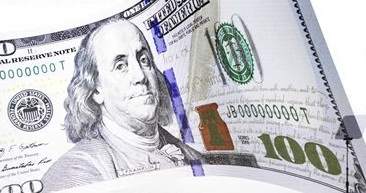The US Treasury Department has introduced a new makeover to the $100 bill, which now has moving images, 3D effects, and changing colors as the most robust anti-counterfeit note in the country’s history.
The department says the process of creating one of the new $100 bills is technologically leaps and bounds beyond anything it has tried before.
The printing process involves embedding thousands of tiny lenses into the bill that make a bright blue security ribbon seem to have a 3D appearance.
Additionally, pictures of tiny bells and little “100” insignias move side-to-side and up-and-down as the bill is tilted. An emblem of the Liberty Bell has also been added to the face of the note next to Benjamin Franklin, which disappears when viewed in certain light.

Other new additions include a picture of a quill pen at the top of the bill and a tinge of yellow on the right side. And to comply with a new federal ruling that requires bill denominations to be more apparent to the visually impaired, there is a giant gold “100” on the back.
Although the $20 bill is the most commonly counterfeited bill inside the US, it is the $100 note that is the most common overseas target. And Federal Reserve Chairman Ben Bernanke says that as many as two-thirds of all $100 bills are actually circulated outside the US.
When the new $100 bill begins to go into circulation in February of 2011, it will be the third time in the past 15 years that the bill has gotten a makeover. No other bill has been resigned so frequently.
Photo credit: AP







